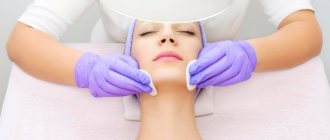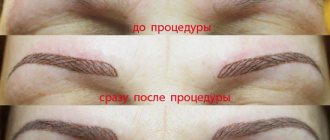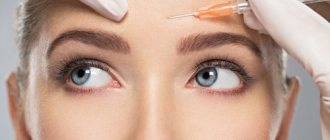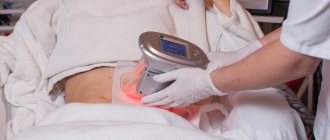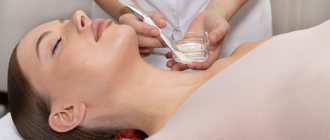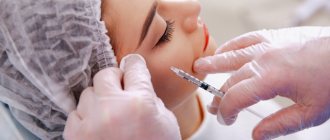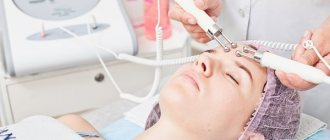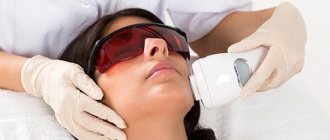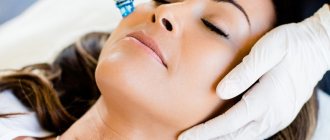If you want to undergo a facial and neck rejuvenation procedure, your esthetician may recommend rhytidectomy. What is it - read the article.
Patients who are considering facelift surgery (rhytidectomy procedure) often need more information before they can decide whether to have the surgery or not.
Read an article on our website about how to tighten your breasts without surgery . You will learn about 6 effective ways.
This article describes what the procedure is, how it is performed, and whether the incisions are visible. You will also find answers to many questions. Read on.
Why do some people age faster than others and may need a rhytidectomy?
Although aging is inevitable, some people may age faster than others. Premature signs of aging can be caused by many reasons:
- Genetics
- Wrong lifestyle choices
- Smoking
- Excessive stress over a long period
Although some causes of premature aging cannot be prevented, a healthy lifestyle can help you look younger. Of course, there are other signs of aging that are completely natural.
- They appear not only on the surface of the upper layer of the epidermis, but also at the subcutaneous level.
- For example, it is not uncommon for people to experience changes in their bone structure as they age.
- Of course, there may also be an accumulation of fat on the skin flap around the eyes, as well as excess skin.
- Regarding the latter, some patients solve the problem with eyelid surgery.
A general increase in sagging is another common sign of aging.
Alternative Methods
Classic facelift is used today in exceptional cases. It has been replaced by innovative rejuvenation techniques that solve problems in a comprehensive manner and without long-term rehabilitation - Mendelssohn lifting, SMAS lifting, check-lifting and endotin lifting.
Additionally, your doctor may recommend combining a circumferential neck lift with a medial neck lift to create an acute cervical-mental angle.
You can make a high-quality correction of age-related changes at the Mediaesthetic clinics in St. Petersburg. The doctor will select a technique for the best aesthetic effect, talk about the intricacies of the procedure and advise on the cost.
Rhytidectomy of the skin of the face and neck: what is it?
Face and Neck Rhytidectomy A
face and neck lift, also known as a rhytidectomy, is a surgical procedure designed to reduce the visible signs of aging on the face and neck. This process includes common signs of aging such as a sagging midface, folds under the lower eyelids, folds between the nose and corners of the mouth, lack of fullness in the face, excess fat in certain areas of the face and loss of skin tone.
This concept also includes the following methods of circular lifting:
- Facelift - only the facial skin is tightened
- SMAS lifting - not just the skin, but the superficial aponeurotic complex is moved
- MASC lifting - correction of the neck and contour of the lower part of the face, including the chin and nasolabial folds area
- The actual facelift - with a circular facelift and additional neck correction
Such plastic surgeries are classified according to the degree of intervention, ranging from minimal to very complex.
Advantages and Disadvantages of the Rhytidectomy Procedure
An increasing number of patients are now choosing the rhytidectomy procedure. It is usually performed with a brow lift or blepharoplasty, although this treatment may not be necessary for some patients and depends on the patient's aesthetic goals. The procedure has its advantages and even some disadvantages.
The advantages are as follows:
- Tightening the skin of the face improves not only a woman’s appearance, but also improves her psycho-emotional state, which affects the quality of life.
- There is an improvement in the condition of the skin on all areas of the face at once, and in just one procedure
- The effect of the procedure lasts 10-15 years , but then a repeat rhytidectomy may be necessary
- The oval is perfectly corrected, which is difficult to do with facial fillers and injections
Disadvantages of the procedure:
- Plastic surgery only tightens the upper layers of the epidermis, rejuvenates areas of the skin by excision of excess tissue and redistribution of deep layers, but does not affect the aging process of the body.
- The procedure is followed by a long recovery period.
- Over time, there is a need for repeated surgery, even if it was performed at a fairly young age (35 years or younger).
- There may be a risk of serious complications.
Before you decide whether to have a facelift or not, you should weigh all the advantages and disadvantages, and if for you there are more advantages, then you should agree to the procedure.
Rhytidectomy: contraindications
Surgery is not performed when the patient has the following conditions:
- Infections in the acute stage, as well as chronic and acute conditions
- Autoimmune and oncological pathologies
- Pregnancy and lactation
- Cardiac pathologies, vascular disorders
- Diabetes
- Diseases associated with poor skin clotting
- Kidney and liver failure
- Hypertension
- Tendency to form keloid tissue
Before surgery, you should consult with your doctor, especially if you have had any medical conditions in the past or currently have them.
How long will the results last?
Genetic predisposition, skin type and care program are all important factors in determining how long a lift will last. But the main factor is the execution technique.
· Minimal lifting, which implies a quick recovery, will last the shortest.
· Mini-lifting or S-lifting involves influencing a small area of skin and muscles. Recovery is fast. The results last up to five years.
· Full or standard classic lift: many types of surgeries are included in this class and are called SMAS platysma, SMASectomy, SMAS stacking, subcutaneous lift, mixed lift and subperiosteal lift. All of them involve extensive rearrangement of the underlying facial tissues and a large area of influence. These procedures are performed by trained, board-certified aesthetic plastic surgeons. Rehabilitation takes longer (from two to four weeks), but the results last up to ten years.
· The wider the area of influence, the longer the recovery process takes, but you enjoy the result longer.
Keep in touch with your plastic surgeon
For reliability, aesthetic results, and health maintenance, it is important to visit your surgeon for regular checkups at scheduled times and if you have questions or concerns regarding the healing or results of your facelift.
How is the traditional facial rhytidectomy procedure performed?
Traditional Facial Rhytidectomy Procedure
During a rhytidectomy, the patient is given specific medications to ensure comfort during the procedure. For this purpose, women and men can choose between intravenous general or local anesthesia, although the surgeon may recommend a specific type of anesthetic depending on your situation. How is the traditional rhytidectomy procedure performed?
- To begin the procedure, the surgeon makes an incision along the hairline at the temples.
- The incision then continues around the ears towards the bottom of the skull.
- Once the incision is made, the doctor can begin to sculpt or redistribute fat and tissue in the face, jaw, and neck.
- The incision also allows the doctor to make changes to the deeper layers of the face and lift the facial muscles.
- In some cases, the surgeon may need to make an additional incision just under the chin.
This will give better access to the neck and allow him to further improve the aesthetics of this treatment area.
Neck rhytidectomy: how is the operation performed?
Currently, neck rhytidectomy is considered a separate procedure. Therefore, this method is often an addition to a regular facelift procedure. During a neck skin tightening procedure, the surgeon typically makes an incision at the front of the earlobe and follows the back of the ear. In a neck lift, the incision will also end at the lower part of the scalp.
During a neck lift, a cosmetic surgeon may remove excess skin and soft tissue to reshape the silhouette of the neck. For example, if a patient does not have a defined jawline, the surgeon may use liposuction to restore it.
What to Consider During Recovery After a Rhytidectomy Procedure: Rehabilitation
Rhytidectomy
While you are recovering from a rhytidectomy, you may need to wear a special dressing. It will be applied to the face by a cosmetic surgeon or a member of his team. The bandage has a specific purpose and should not be removed by the patient as it will minimize the swelling and bruising that the patient may experience after the surgical procedure. What else should you consider during recovery from a rhytidectomy procedure? Rehabilitation goes like this:
- In some cases, the surgeon may need to place thin cannulas (tubes) in the treatment area.
- These tubes are important for removing excess blood or fluid that has collected during the procedure.
- After you leave the clinic, your surgeon will provide you with more information about how to handle these drains.
- In most cases, the procedure is performed under general anesthesia. Local anesthesia is also possible for some cosmetic procedures that rejuvenate the skin.
- If the facelift procedure is performed under general anesthesia, you must be taken home.
- It is also recommended that someone stay with you for at least 24 hours after the procedure.
Patients receive other instructions during cosmetic surgery that must be strictly followed during recovery. In most cases, the patient will have to use or take certain medications. This is necessary for healing and to prevent infection or reduce discomfort that may result from surgery.
Your recovery will also depend on the type of plastic and reconstructive surgery you had:
- For example, some women had a procedure with deep facelift or folding techniques. There will then be a longer recovery period than those ladies who have undergone surgery with minor lifting techniques on the middle and lower part of the face.
- If a patient has had facial rejuvenation procedures such as laser resurfacing, they may need additional recovery time. Treatments such as laser resurfacing allow the facial skin to produce more collagen and therefore increase its elasticity.
- Some procedures may require the removal of sutures, but most modern surgical procedures are performed with absorbable sutures. This means you do not have to return to the clinic to have them removed.
But you need to visit a doctor for a re-examination. The doctor will schedule a time for a follow-up consultation after surgery.
Rehabilitation period, what is important to observe
The patient spends 2-4 days in the hospital under the supervision of a doctor. The rehabilitation itself lasts up to 15 days. Due to the safe operation, the risk of complications is virtually eliminated. On the 3-5th day, swelling is possible, which goes away on its own. Mild swelling may be observed for 10 days. Already on the 7th day, the first sutures are removed, and sutures from the scalp are removed after 2 weeks.
In order for the postoperative period to go smoothly, you must strictly adhere to the doctor’s recommendations:
- during the first month, exclude physical activity and sports;
- do not visit baths, saunas, swimming pools;
- avoid sunlight;
- to reduce the risk of swelling, at first it is better to take a reclining position and not bend over;
- exclude foods rich in sodium from the diet (smoked, salted, seasonings that contain monosodium glutamate);
- To avoid swelling and excess weight, create a menu enriched with vegetables. Fruits, proteins;
- wear loose clothing and shoes without heels;
- do not dye your hair for two months;
- exclude cosmetics, masks, massage, peeling, and hardware procedures for the time specified by the doctor.
Are the incisions visible after rhytidectomy: what other side effects and complications may there be?
Rhytidectomy incisions are not visible.
Rhytidectomy incisions are only slightly visible. An experienced surgeon will ensure that fine stitches are either hidden by the hairline or the natural contours of the face and ears.
Patients should expect some side effects after surgery:
- Edema, hematomas, seromas - appear due to damage to lymphatic capillaries and blood vessels
- Bleeding, especially in the first 12 hours after surgery
- Infection and suppuration in the wound - this can occur if there were severe hematomas or necrosis
- Loss of sensation is common after plastic surgery. Goes away after the rehabilitation process.
- Damage to the facial nerve is the most serious side effect. Many women do not even undergo plastic surgery for this reason. As a result, it may even be difficult to eat and drink water. Treatment is long-term and requires an individual approach.
- Facial asymmetry can occur due to improper fixation of muscles and skin.
- Overstretching of the skin - if excessive tension was applied to the tissues during the process of their distribution.
- Ugly and rough stitches - if the doctor is inexperienced, the scars will be noticeable.
- Formation of keloid scars - Many people have a predisposition in the body to form keloid tissue. Therefore, it is better to warn the surgeon about this before the operation.
- The formation of age spots - this happens in patients with delicate and sensitive skin. Typically, such a defect does not require treatment and goes away on its own within a year.
To avoid such complications and minimize the occurrence of side effects, you should contact only experienced doctors, and it is also important to follow all the recommendations and instructions of the plastic surgeon.
Preparing for surgery
At the initial consultation with the surgeon, the volume and technique of the intervention are determined. After this, the patient is sent for preoperative examination, which includes:
- consultation with a therapist and anesthesiologist;
- undergoing fluorography and ECG;
- passing a general and biochemical blood test, a coagulation test, tests for HIV, hepatitis, syphilis;
- passing a general urine test.
During the preparation period (about 2 weeks), you should stop smoking. Three days before surgery - exclude alcohol, and 8-10 hours - any food and liquid.
Lateral reduction rhytidectomy, lower facial skin, circular procedure: price
Naturally, in each specific case a specific type of rhytidectomy is needed - lateral reduction, lower part of the face or circular. Only a doctor can determine what exactly you need. The price will also vary. The cost of facial plastic surgery will be higher than average when compared with other procedures, and this is justified. After all, the operation is complex and requires high-quality manipulations and energy expenditure on the part of the doctor. Here is the price list for services in Moscow in one of the clinics:
Price of rhytidectomy
Naturally, in the regions the cost of services will be lower. However, it is in the capital and other big cities that there are more experienced plastic surgeons who perform their work efficiently.
Rhytidectomy: what should patients' realistic expectations be?
Patients considering rhytidectomy should have realistic expectations about the procedure. Within this framework, the patient must be aware that a facelift does not change the basic appearance of the face, nor can it reverse the aging process after the procedure.
Worth knowing: Good results in face rejuvenation and lifting can only be obtained through surgery. Although there are non-surgical procedures that can rejuvenate the skin, this is the only way to lift the muscles under the skin.
Some procedures are also combined with fillers or laser resurfacing to improve results. To know what you can expect, it is always a good idea to discuss your expected results in more detail with your cosmetic surgeon.
As stated above, a facelift can be a complex procedure. Therefore, it is important to choose an experienced surgeon who is familiar with the location of the important facial nerve, the platysma, the nasolabial fold, and the superficial musculoaponeurotic system. This is important so that nerve damage during the procedure can be prevented later. However, even experienced facial plastic surgeons cannot guarantee the absence of complications.
To know exactly what to do after a rhytidectomy, ask your surgeon a few important questions:
- About medications
- Bandages
- Your next visit to the clinic
- Physical activity
- About when you can wear makeup again
But a good doctor should tell everything himself and leave his phone number for contact in case of complications or unforeseen situations.
Possible complications after a facelift
Fortunately, serious complications after a facelift are rare. However, all surgical procedures carry some degree of risk. The following complications are possible with any operation:
- Negative reaction to anesthesia - Hematoma or seroma (a buildup of blood or fluid under the skin that may require removal) - Infection and bleeding - Changes in sensation - Scarring - Allergic reactions - Damage to internal tissue - Unsatisfactory results that may require additional procedures.
You can help minimize certain risks by following your plastic surgeon's instructions and advice.
Tags: plastic surgery
Market Analytics
- Global cosmetics market 2022: an unprecedented test for the global cosmetics industry
- Top 10 Cosmetic Research and Development of 2022
- 2020 in the beauty industry – innovation without borders
Convenient search for beauty salons on our website
Beauty salons in Moscow Beauty salons in St. Petersburg Beauty salons in Ekaterinburg Beauty salons in Novosibirsk
Latest blog posts on our website
- Naturecream / Properties of the “Sunny” oil itself
- Naturecream / “Sugar” wrinkles - or what glycation can do
- Naturecream / Esterified oils
- Naturecream / Arnica - the magical plant of alchemists
- Naturecream / Tremella Extract - Snow Mushroom Detox for Skin
- Prostye-sovety / How to visually enlarge your lips with makeup
- Naturecream / Apricot kernel oil for face
- Naturecream / MATRIXYL3000 - the best skin elasticity stimulator
- Naturecream / SPF in Natural Oils
- Naturecream / Geranium (Pelargonium) oil for skin health and beauty
Latest forum topics on our website
- Natalya / How to properly make a gelatin mask?
- Mrs._Smith / Badly sunburned! What to do?((
- Ice / Is it necessary to combine fitness classes with a diet?
- Antonova / What can be used for hair loss?
- Radio operatorKat / Who was on a protein diet?
Reviews about the procedure
Facial skin tightening (rhytidectomy) [Leave a review]
Leave your feedback about this procedure (it will appear on this page after moderation)
In this form, describe only
your personal
experience of undergoing the procedure.
In order to leave a comment regarding the content of the article, use another form - in the “comments” block at the bottom of the page.
Other articles in this section
| Canthoplasty and canthopexy (lower eyelid surgery) Canthoplasty and canthopexy are cosmetic surgeries to correct drooping, flabby or baggy lower eyelids. Canthoplasty and canthopexy can remove bags under the eyes, refresh and rejuvenate the face. |
| Hair Transplant Alopecia, hair loss or baldness, is a common problem that affects both women and men. Its manifestation can be triggered by stress, illness, certain medications and heredity. While some factors are temporary, many lead to permanent hair loss, which can affect a person's self-confidence. Hair transplant is intended to help people suffering from baldness and hair thinning. |
| Eyelid surgery (blepharoplasty) Eyelid surgery, also known as blepharoplasty or eyelid lift, is an operation that changes the shape of the eyes or the shape of the eyelids. The purpose of the operation is to achieve the desired aesthetic effect. During this operation, the skin is excised and excess fat is removed. |
| Fillers: what they are, types, before and after photos Fillers are minimally invasive aesthetic injectable preparations used to create volume, change facial contours and fill wrinkles. Filler injections are most often used on the face, neck and arms to achieve volume, smoothness and a youthful appearance. Dermal fillers are one of the most popular aesthetic treatments because they provide instant results with very little risk and recovery time. |
| The procedure for correcting facial wrinkles using Botox Wrinkle correction using Botox is used all over the world as a cosmetic procedure. Botox injections are performed quickly and require virtually no rehabilitation, and you can see the results in the coming days after the procedure. |
| Forehead surgery The forehead is one of the characteristic features of a person’s face, by which one can determine his gender. In fact, the foreheads of men and women differ in many ways, but often people do not notice this difference. The ideal female forehead should be smooth and even. |
| Possible complications after a facelift Modern women, in their desire to look young and beautiful, have long gone beyond cosmetology and are increasingly turning to plastic surgeons for services. Having chosen this method of rejuvenation, you should remember that in 5% of cases a facelift causes pathological reactions in the body. This article will discuss what to do if complications arise after a facelift. |
| Mesothreads for face lifting Mesothreads for face lifting are one of the modern non-surgical anti-aging techniques that help when conventional cosmetics and popular folk methods are no longer enough to provide the skin with a blooming appearance. Mesothreads can be supplied by either a professional cosmetologist or a plastic surgeon. We will tell you in more detail what mesothreads are, their pros and cons, who are shown 3D mesothreads, how they work and how long the effect lasts. |
| Hyaluronic acid in the lips Hyaluronic acid is injected into the lips in almost every beauty salon or cosmetology clinic - this is one of the most popular procedures among women of different age categories. The introduction of hyaluronic acid into the lips allows you to maintain youth and moisture, as well as add volume to the lips and correct their shape. |
| Ear plastic surgery (otoplasty) Ear plastic surgery (otoplasty) or ear correction is an aesthetic procedure that changes the size, position or proportions of the ear. The result of the correction depends on the changes you want to make to your appearance. In general, plastic surgery improves self-confidence, especially in children and adolescents. With the help of otoplasty, you can press your ears back to your head if they are protruding; adjust the level if one ear is higher than the other; make the ears symmetrical, if one ear is larger or smaller than the other, and also reduce/enlarge both ears. |
Rhytidectomy: before and after photos
See how your face and neck look rejuvenated after rhytidectomy. Here are the BEFORE and AFTER photos:
Rhytidectomy: before and after photos Rhytidectomy: before and after photos Rhytidectomy: before and after photos Rhytidectomy: before and after photos Rhytidectomy: before and after photos
Have you had a rhytidectomy? How did the operation go? What are the results? Write your answers in the comments and share your feelings.
Rehabilitation
The first day after surgery should be spent in the clinic under observation. Painful sensations are relieved with medications prescribed by the doctor. Swelling and hematomas will gradually resolve and disappear completely within 4 weeks. Full recovery after a facelift and preliminary assessment of the results can be discussed no earlier than after 3 months.
For rehabilitation to be successful and for you to quickly return to your normal rhythm of life, it is recommended:
- do not wash your hair during the first week;
- sleep face up and on a high pillow for the first three days;
- do not smoke or drink alcohol, do not take drugs that interfere with blood clotting for three weeks;
- refrain from playing sports, visiting the bathhouse and sauna, facial massage and solarium for three months.
